10 min to read
How to Write Ad Copy: 10 Tips for a Killer Campaign
Although (obviously) nuanced, the buyer's journey is quite simple.
1. They read something.
2. That 'something' resonates.
3. They buy.
Whether it happens right away or 3 years from now, the only reason they're buying your product is because a copywriter wrote words that struck a chord with them.
In today's article, we'll show you our 10 favorite tips for doing just that.
There's no ~right way~ to write good ad copy...
Tricky. We know.
The subjective aspect of copywriting is the hardest concept to grasp, especially if you're trying to start freelance writing with no experience.
It helps to think of copywriting as a mix between science and art.
-
The "science" part is about understanding your target audience, the reasons behind their behaviors, and how to elicit those behaviors using your words.
-
The "art" side is where you have to be inventive. To use words in a way that resonates with people on a deeper level, you have to be witty and creative.
While it's easy to teach yourself the technical side of things by learning sales, marketing, and psychology, the creative aspect is what truly sets great ad copy apart.
You can study frameworks all you want. But at the end of the day, it's all about applying them to real people and appealing to human emotion.
10 Tips for Writing Compelling Ad Copy
Whether it's in-store advertising or a tiny block on the side of a blog post, all copywriters use these 10 strategies when creating ad copy.
1. Present a solution to their problems.
Every successful ad focuses on pain points or gets readers to focus on them themselves. At the most simple level, your customers only care about a few things:
-
Relationships
-
Health
-
Appearance
-
Social status
-
Security
-
Money
-
Time
-
Convenience
In one way or another, your product solves at least one of these problems. Perhaps the most important part of ad writing (and, really, digital marketing as a whole), is communicating that.
Take a look at this LinkedIn ad for Eversource, a residential energy provider in Connecticut, Massachusetts and New Hampshire:
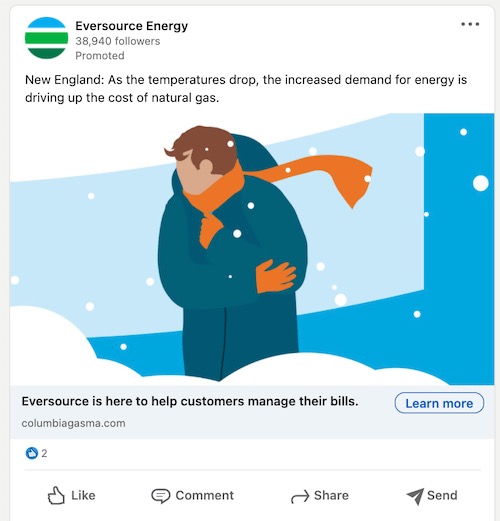
Not only do they present a massive problem (freezing weather = high energy bills), but they also present the solution (Eversource can help you save).
"How can I possibly save money when I'm using the energy anyway? It's freezing outside!"
Well, if you click, maybe you'll find out.
2. Use "power" words (and emphasize them).
Power words trigger an emotional response in your audience. They have immense psychological influence.
Generally, power words revolve around one of the following:
-
A deadline or limited-time offer
-
A deal, such as a discount or freebie
-
An emotion, like happiness or fear
These are the words your readers care about most. So, they should be front and center.
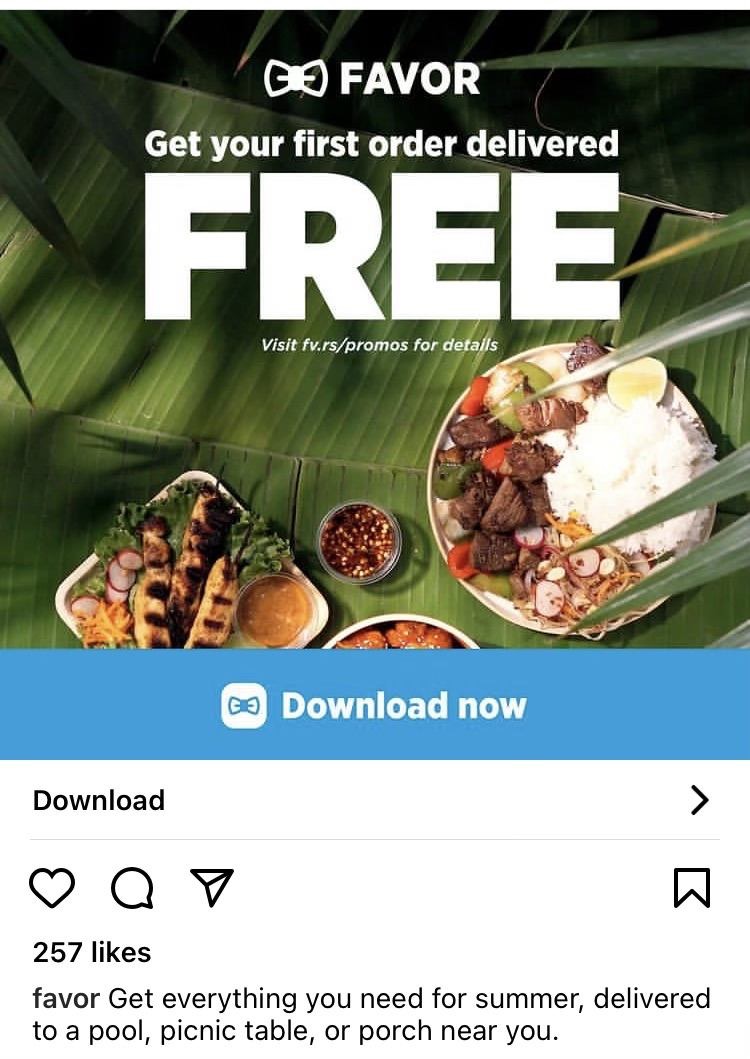
In this ad, the word "FREE" is the first thing they'll see. A few split seconds after, they'll notice the food in the background and see the beginning of the sentence.
They'll put two and two together, realize the product benefits them, and sign up to claim their reward.
3. Tell them what your product does in plain, simple English.
Nobody will click your ad if they have to play guessing games to figure out what you're offering. People want to know what they're getting before they invest their time.
To boost sales and click-through rates, you have to be straightforward and clear about your product's features and benefits.
Here's a look at a Google search ad that uses the right keywords straight away:
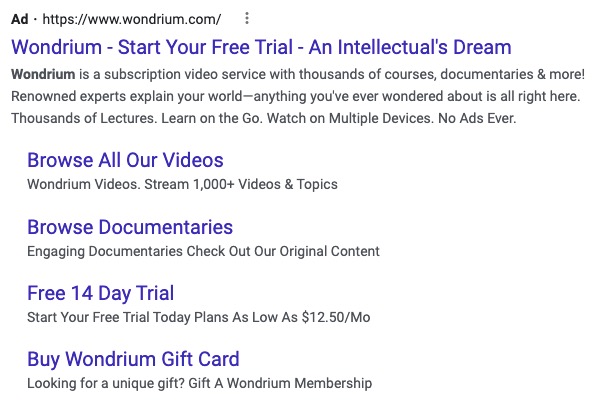
By saying straight away that "Wondrium is a subscription video service," it only takes your reader a few seconds to figure out they should click.
4. Tell a story.
If you're running a basic Facebook ad campaign, you probably can't tell a whole story. You have limited space and only a few words. Storytelling is mainly for video ads.
Here's a TikTok ad for Spotify's Car Thing (a name that quite literally embodies tip #3):
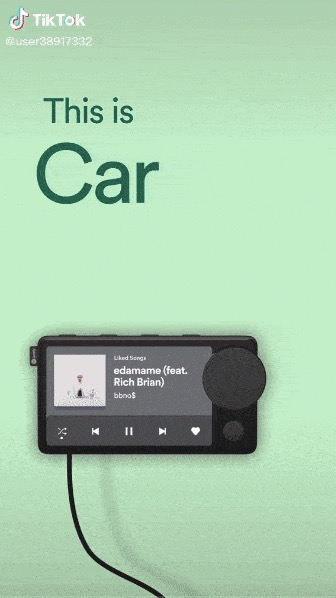
From one slide to the next, this ad accomplishes three things:
-
Addresses a problem
-
Proposes a solution
-
Adds a tangible benefit
5. Remember that your copy is the first step in the conversion funnel.
The primary goal of ad copy is to get your foot in the door with a customer or subscriber. Some buyers will convert right away, but they'll still land on your website before they do.
So, your goal isn't to outright sell your product or service. Your goal is to move them through the conversion funnel (i.e., get them to click on your ad).
That's all you want. A click. Your landing page will handle the rest.
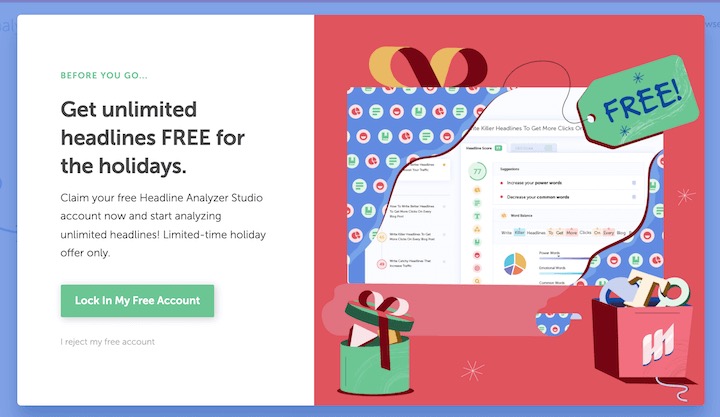
"Buy," "Add to Cart," "Sign Up Today" — these CTAs are boring. They work well for functionality purposes (e.g., adding an item to your shopping cart), but they don't maximize your CTR.
The ad above knocked it out of the park because it's speaking directly to the reader. The word "my" in "Lock in my free account" subconsciously implies ownership over the product and, oftentimes, convinces undecided readers to act fast.
6. Show proof of your claims.
Sometimes, the best ad copy is something your customer wrote. Social proof sells — 88% of customers trust user reviews as if they were personal recommendations.
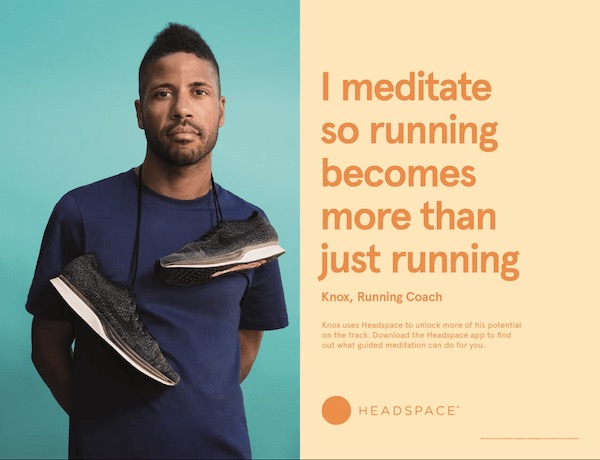
You can piggyback off someone else's success with your product by highlighting it in an ad. Pick a review that shows your product's benefits or ability to solve a problem, and put it front and center.
7. Be conversational.
You wouldn't use words like "thus" or "therefore" when having a conversation with someone. Don't use them in your ad copy if you want to make an intimate connection with the reader.
You want your customers to feel like they're talking to a human, not a robot.

In this example, everything from the ad headline to the call-to-action button is casual. We use phrases like "hush-hush" and "give me the deets" in real life, so it's easy to feel like the ad is speaking to you.
8. Use numbers.
Numbers are eye-catching and stand out amidst a sea of text. You might use:
-
A jaw-dropping statistic
-
A percentage increase or decrease in some area
-
Specific numbers to show your reader what you offer (e.g., "10% off")
-
A timer or countdown
-
Something specific to your product (e.g., a calorie amount or price)
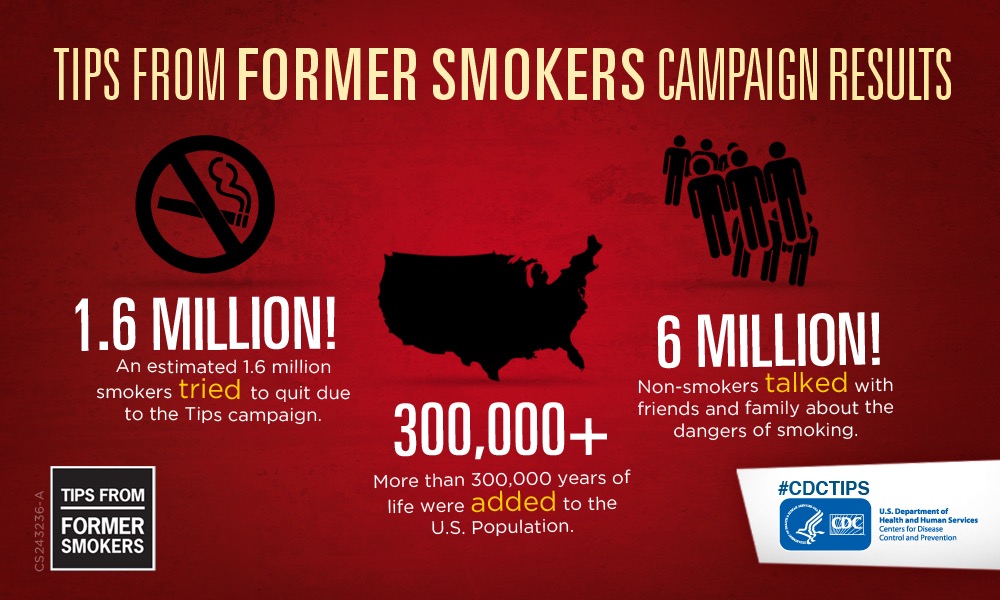
9. Use contrasting words.
Less/more is the best way to use contrasting words in your ad copy. It's a vivid way of saying "you're going to get X and you won't have Y."
For example, this Popchips ad highlights the difference in calories between its product and competing ones (traditional and kettle potato chips).
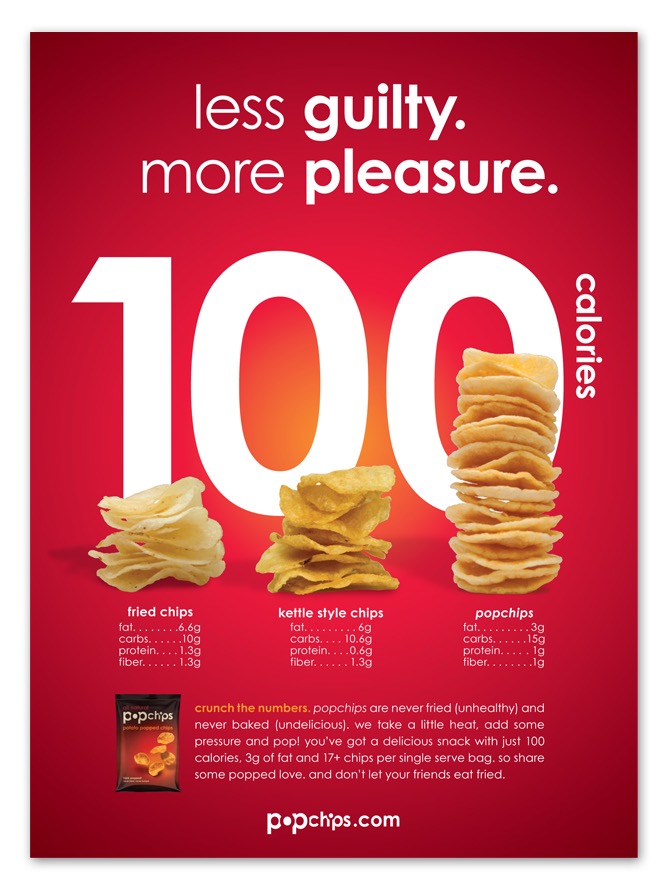
By saying, "Less guilty more pleasure," they're doing a few things we've touched on:
-
Using a play on words (‘guilty pleasure’ is a common expression)
-
Highlighting the "100" as the calorie count
-
Appealing to people who want a taste of junk food, without the heaviness
-
Emphasizing their singular selling point — you can snack on more of them while eating fewer calories
10. Rhyme words together.
When we hear things that rhyme, we keep them in our heads. We repeat them subconsciously.
Apple's iPhone 14 ad does a great job at this, while highlighting a key benefit. Cropping a photo means zooming in and, therefore, reducing its quality.
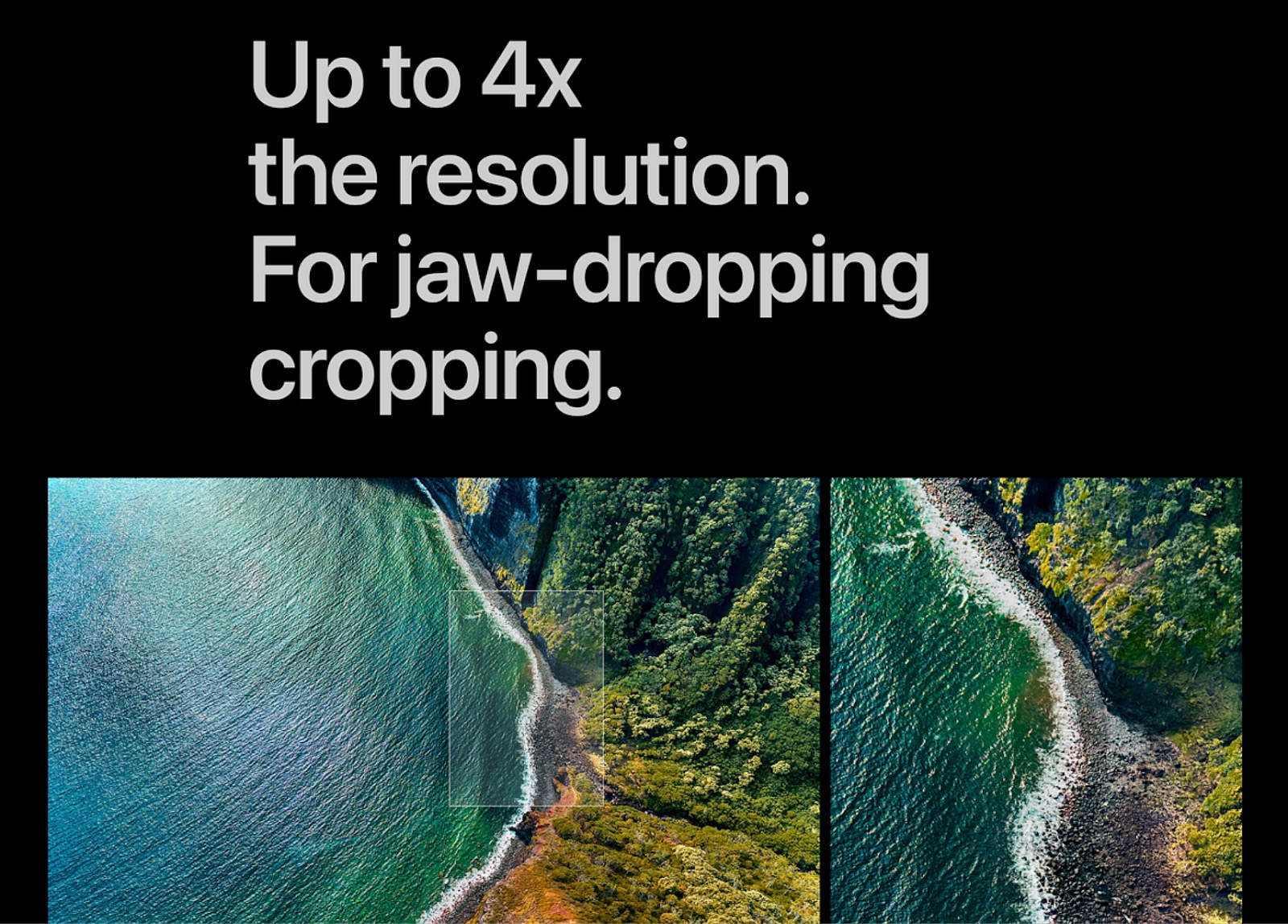
4x resolution? "Jaw-dropping cropping" indeed.
Copywriting is highly nuanced.
One thing you'll notice about these ads is that, despite using a few basic principles, they're all different. Despite its main principle being simplicity, digital advertising is complex. That's why the best way to learn how to write ad copy is to read it as much as possible.
In the end, it's all about knowing your product and audience, while finding creative ways to communicate its benefits quickly and effectively.
FAQs - Frequently Asked Questions
How can I identify the main problems my product solves for potential customers?
Identifying the main problems your product solves for potential customers begins with comprehensive market research and customer feedback analysis. Utilize advanced data analytics tools to segment your target audience and understand their behaviors, preferences, and pain points. Engaging directly through surveys or focus groups can provide invaluable insights. For instance, Codedesign, a digital marketing agency, excels in leveraging customer data and analytics to pinpoint specific challenges their clients’ products can address. They analyze search trends, social media interactions, and online behaviors to identify common issues that the product can solve. By understanding the specific needs and frustrations of your target market, you can tailor your product's value proposition to address those directly, ensuring your messaging resonates strongly with potential customers.
What are "power" words and how do I effectively incorporate them into my ad copy?
Power words are emotionally charged terms that provoke a response or action from the reader, enhancing the persuasive impact of your ad copy. These words can trigger excitement, fear, curiosity, or urgency, making them highly effective in digital marketing strategies. To incorporate them effectively, understand the emotions you want to evoke in your audience and choose power words that align with your product’s benefits and your campaign’s goals. For example, words like “unleash,” “revolutionary,” “exclusive,” or “instant” can significantly amplify your message's impact. Codedesign often integrates power words into their clients' ad copies to grab attention and drive higher engagement and conversion rates. The key is to use these words strategically and sparingly to avoid overwhelming your audience or diluting the message's authenticity.
Can you explain the balance between creativity and clarity in ad copywriting?
In ad copywriting, maintaining a balance between creativity and clarity is essential for engaging your audience while conveying your message effectively. Creativity captures attention and differentiates your brand, making your ad memorable. Clarity ensures that the message is understandable, leading to the desired action by the audience. To achieve this balance, start with a clear, concise message about the benefits of your product or service. Then, infuse creativity through storytelling, humor, or unique expressions without compromising the message’s simplicity and directness. Codedesign, for instance, crafts ad copies that are creative yet straightforward, ensuring that the core message is never lost in the creativity. This approach helps in creating ads that not only stand out but also drive the audience towards the intended conversion.
How important is storytelling in ad campaigns, and how can I use it in short ad formats?
Storytelling is crucial in ad campaigns as it builds a connection with the audience by evoking emotions and humanizing the brand. Even in short ad formats, storytelling can be effectively used by focusing on a single, compelling aspect of your story. The key is to engage viewers quickly with a relatable problem or scenario, then introduce your product or service as the solution, and conclude with a clear call-to-action. For example, Codedesign utilizes storytelling in social media ads by highlighting customer testimonials or a quick before-and-after scenario that encapsulates a transformative experience. Even in a 15-second video or a concise banner ad, leveraging storytelling elements such as characters, conflict, and resolution can significantly enhance the ad’s impact and memorability.
What is the role of ad copy in the conversion funnel, and how does it differ from the role of a landing page?
Ad copy plays a pivotal role in attracting and engaging potential customers at the upper stages of the conversion funnel, primarily focusing on awareness and interest. Its primary goal is to capture attention and spark curiosity, compelling users to take the next step. On the other hand, a landing page serves a more detailed and persuasive role deeper in the funnel, aiming to convert interest into action by providing comprehensive information, benefits, and testimonials that support the decision-making process. For instance, Codedesign optimizes ad copy to generate initial interest and drive traffic, while their landing pages are meticulously designed to address specific queries and objections, guiding visitors towards making a purchase or inquiry. This distinction highlights the strategic use of different elements at various stages of the funnel to maximize conversion rates.
Can you provide examples of how to show proof of claims in ad copy?
Showing proof of claims in ad copy is essential to build credibility and trust with your audience. This can be achieved through various forms of evidence, such as customer testimonials, expert endorsements, before-and-after scenarios, or statistical evidence. For example, if your ad copy claims that a skincare product reduces wrinkles in two weeks, backing this claim with before-and-after images of users or citing a clinical study where 95% of participants observed a noticeable difference can significantly enhance the credibility of your claim. Codedesign often incorporates user testimonials and data-backed results in their clients' ad campaigns to substantiate the benefits of the products or services, thereby increasing consumer confidence and encouraging conversions.
How can I make my ad copy more conversational and engaging?
Making your ad copy more conversational and engaging involves writing in a natural, friendly tone as if you were speaking directly to your audience. This approach helps in creating a personal connection and making your message more relatable. Use questions to involve the reader, employ a casual language that mirrors your audience’s, and include actionable phrases that encourage interaction. For instance, Codedesign crafts ad copies that directly address the reader with questions like “Looking for a hassle-free digital marketing solution?” or using phrases such as “Let’s boost your online presence together!” This technique not only engages readers but also makes the brand more approachable, fostering a sense of community and dialogue.
In what ways can using numbers in ad copy enhance its effectiveness?
Using numbers in ad copy enhances its effectiveness by adding specificity, credibility, and clarity to your message. Numbers attract attention and can make claims more believable. For example, stating “Join over 10,000 satisfied customers” or “Increase your conversion rate by up to 150%” provides tangible evidence of your product’s value and success. Codedesign employs this tactic by highlighting specific metrics, such as the percentage increase in website traffic or the exact number of leads generated for clients, to demonstrate measurable results and the effectiveness of their strategies. Numbers can break through the clutter of words, offering clear, compelling reasons for customers to choose your brand or product.
What does it mean to use contrasting words in ad copy, and how can I apply this technique?
Using contrasting words in ad copy involves pairing opposites to create a striking effect that emphasizes differences or improvements. This technique can highlight the transformation your product or service offers or differentiate your brand from competitors. For example, using phrases like “From outdated to cutting-edge” or “Turn your weakness into strength” effectively showcases the change or benefit your offering provides. Codedesign utilizes this strategy to underline the before-and-after impact of their services, illustrating how they transform their clients’ digital marketing efforts from underperforming to excelling. By employing contrasting words, you can vividly depict the value proposition and compel the audience to envision the positive changes they can experience.
Are there any tips for creating memorable rhymes in ad copy, similar to the "jaw-dropping cropping" example?
Creating memorable rhymes in ad copy requires a blend of creativity, relevance, and simplicity. Rhymes make your message catchy and easier to recall, but they should also be meaningful and directly related to your product or service. To craft effective rhymes, focus on key features or benefits of your offering and brainstorm words that not only rhyme but also reinforce your message. Keep it simple and avoid forcing the rhyme, as natural-sounding phrases are more likely to resonate with the audience. For example, a campaign for a photo editing app could use “Snap, tap, and beautify in a zap” to emphasize ease and speed. Codedesign employs such creative techniques to make ad copies more engaging and memorable, ensuring that the core message sticks with the audience long after they've encountered the ad.



Add comment ×